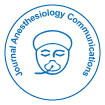Pectoralis Nerve (Pecs 2) Block for Breast Cancer Surgeries: A Pilot Study for an Ongoing Practice of Perioperative Surgical Home
*Corresponding Author: Qiu C, Department of Anesthesiology, Kaiser Permanente Baldwin Park Medical Center, 1011 Baldwin Park Blvd, Baldwin Park, CA 92649, USA, Tel: +6268517253, Email: Chunyuan.X.Qiu@kp.orgReceived Date: Sep 28, 2018 / Accepted Date: Oct 25, 2018 / Published Date: Oct 30, 2018
Citation: Chung EP, Desai VN, Diaz DM, Moy SD, Morkos AS, et al. (2018) Pectoralis Nerve (Pecs 2) Block for Breast Cancer Surgeries: A Pilot Study for an Ongoing Practice of Perioperative Surgical Home. Anesth Commun 2: 104.
Copyright: © 2018 Chung EP, et al. This is an open-access article distributed under the terms of the Creative Commons Attribution License, which permits unrestricted use, distribution, and reproduction in any medium, provided the original author and source are credited.
Abstract
Introduction: Recent studies suggest that the choice of anesthesia and analgesia can affect clinical outcomes and survival for breast cancer patients. Specifically, the use of regional anesthesia may have potential advantages in improving morbidity and mortality in this patient population. We describe our experience with the Pecs 2 block for breast cancer surgery.
Methods: Nine female patients for breast cancer surgeries underwent Pecs 2 block preoperatively, as originally described by Blanco. Intraoperatively, the patients received light to moderate sedation with opiates and a Propofol infusion. The surgeons were asked to supplement with local anesthetic infiltration depending on the patient’s response to surgical incision. We recorded the amount of intraoperative and postoperative opiate use as well as patient’s pain scores in the post anesthesia care unit (PACU) after surgery.
Results: All patients received their surgery under the described anesthetic management. Seven of the patients required supplemental local anesthetic infiltration by the surgeon. The total amount of fentanyl given intraoperatively ranged from 25 mcg to 150 mcg. Three patients did not require any additional opiates in the PACU. Three patients received a total of 100 mcg of fentanyl, one received a total of 0.8 mg of hydromorphone, another received 50 mcg fentanyl and 0.6 mg hydromorphone and one patient received 200 mcg fentanyl and 1.8 mg hydromorphone during recovery.
Conclusion: Perioperative Surgical Home (PSH) protocols encompass many different aspects of perioperative care including anesthetic technique. In our effort to continuously improve PSH for our breast cancer patients, we created a pathway in our hospital to incorporate regional anesthesia for breast cancer patients. Here, we demonstrated the possibility of using a regional anesthetic technique for both surgical anesthesia and postoperative analgesia.

 Spanish
Spanish  Chinese
Chinese  Russian
Russian  German
German  French
French  Japanese
Japanese  Portuguese
Portuguese  Hindi
Hindi